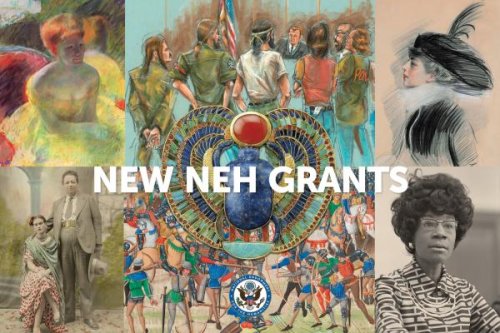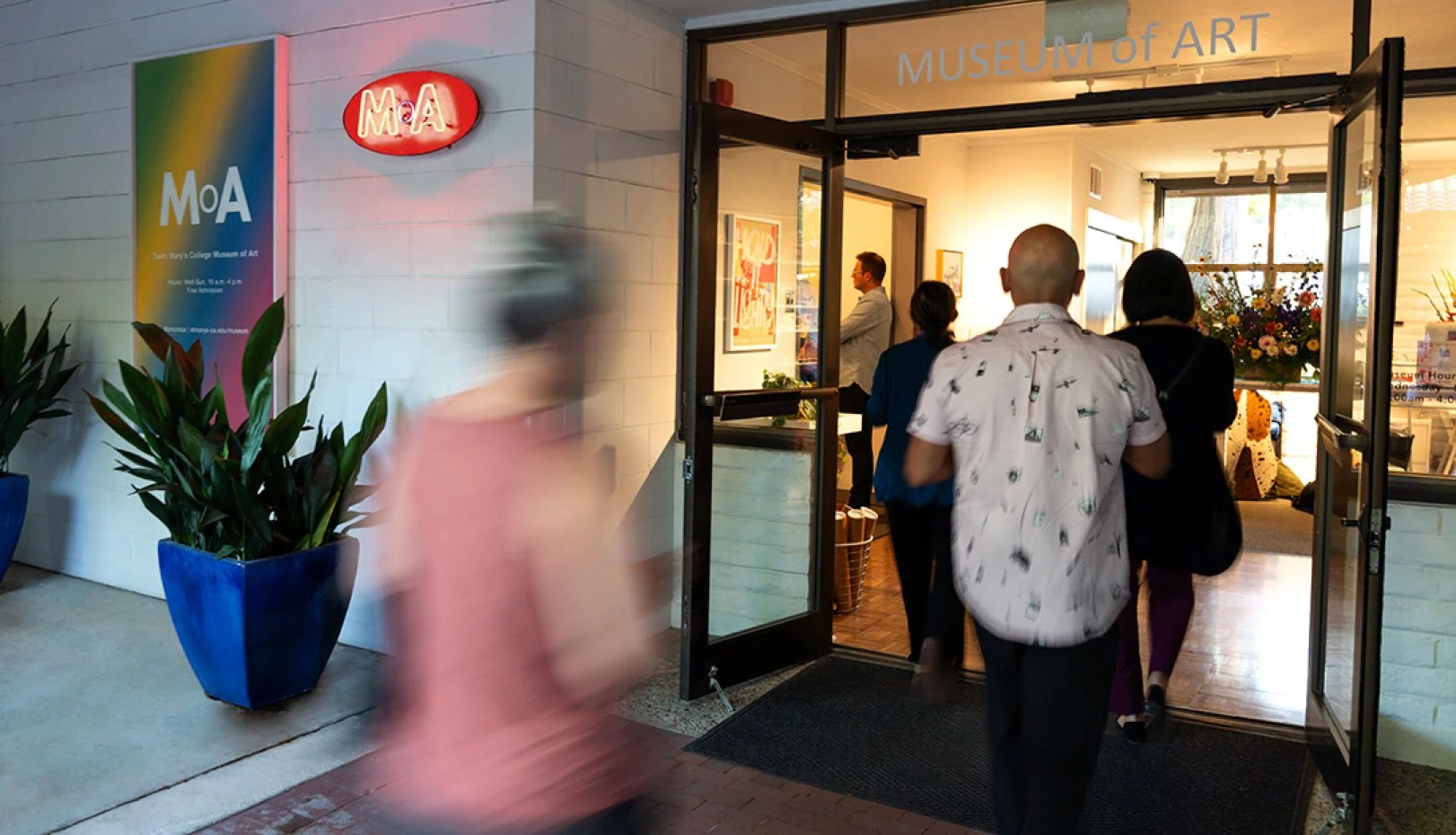
SMC’s Museum of Art visitors at the opening of “ΩA Omega Alpha,” the Northern California debut of Afro-Cuban artist Harmonia Rosales and paintings that reimagine Renaissance art. Exhibits like this are just one piece of the museum's evolution, says Lauren MacDonald. “We now recognize the need for climate mitigation strategies that help protect the museum building and its collections.” / Photo by Francis Tatem
Climate Smart for the Arts: SMC’s Museum of Art Wins Grant from the National Endowment for the Humanities
More than $50,000 in funding will be used to develop strategies that help protect the College’s extensive collection, mitigate extreme weather events, and attract new patrons.
Saint Mary’s College of California recently secured a competitive $50,035 grant from the National Endowment for the Humanities (NEH) Climate Smart Humanities Organizations program. The funds will help the College protect the collections at the SMC Museum of Art (SMCMoA), enhance its physical surroundings, and become the first carbon-neutral building on the Saint Mary’s campus.
Reaccredited in 2021 by the American Alliance of Museums—the highest national recognition afforded to museums in the United States—SMC’s Museum of Art is at a pivotal stage of its development, said Lauren MacDonald, Executive Director of the museum and Dean of the Library and Academic Resources. SMC’s museum leadership worked carefully and intentionally to align SMCMoA’s planning efforts with both the College’s Transformation 2028 strategic plan and its Climate Action Plan. The museum has also partnered with SMC’s Office of Sustainability to develop a “climate smart” operations model that can be used for other buildings on the Saint Mary’s campus.

“We were delighted to learn of the NEH Climate Smart Organizations program because we see such a strong alignment between SMCMoA’s planning goals and Climate Smart’s goals,” said MacDonald.
In addition to Saint Mary’s College, just four other organizations were awarded NEH Climate Smart grants. The grants support cultural institutions such as SMCMoA in conducting environmental assessments to anticipate and plan for operational, physical, and financial risks posed by climate-related events.
Preparing for the future
Recognized as a landmark for art in Northern California, SMC’s Museum of Art boasts a permanent collection of over 5,000 objects. Inspired by its founder, Brother Cornelius Braeg, FSC, the museum cares for the most comprehensive collection of William Keith paintings in the nation.
The NEH matching grant constitutes half of the funds needed to help SMC with its SMCMoA environmental goals. An additional $50,035 is now needed from donors and other third-party non-federal sources to fully develop the College’s decarbonization and design plan for the museum. The project includes a climate-informed assessment of the SMCMoA building, such as an organizational energy audit and conceptual plans for carbon-reducing building improvements.
The museum has undergone a number of enhancements in recent years: free admissions and extended hours, expanded programming, technological upgrades, and new campus and community relationships meant to increase awareness of the facility’s offerings. Still, said MacDonald, funds from the NEH Climate Smart grant are expected to enable further improvements such as the repositioning of the museum entrance for improved accessibility, efficiency, and safety.
The NEH matching grant constitutes half of the funds needed to help SMC with its SMCMoA environmental goals. An additional $50,035 is now needed from donors and other third-party non-federal sources to fully develop the College’s decarbonization and design plan for the museum.
Support Today

Currently, MacDonald explains, the museum's entrance is problematic due to its non-visible access point through a courtyard. “By switching the entrance and repositioning the museum to a more visible location, the museum can fully realize its potential to serve the campus and public communities while also addressing the need for adaptive space that is climate responsive,” she says.
Ultimately, said MacDonald, the goal is for SMCMoA to improve its physical facilities to accommodate community needs and adapt to weather extremes, protect its collections, achieve its emissions-reduction goals, and sustain its mission and programs.
“We’re proud to have expanded our collections, programs, outreach, and exhibits, but we now recognize the need for climate mitigation strategies that help protect the museum building and its collections," she said.




